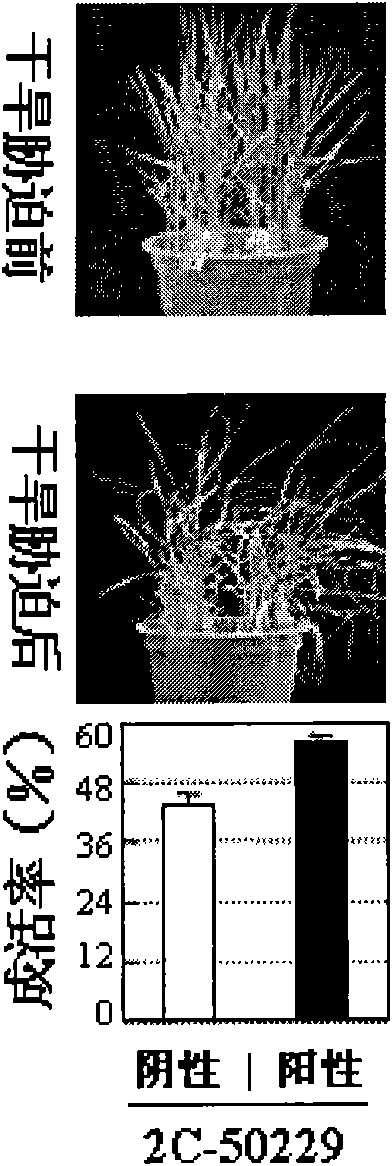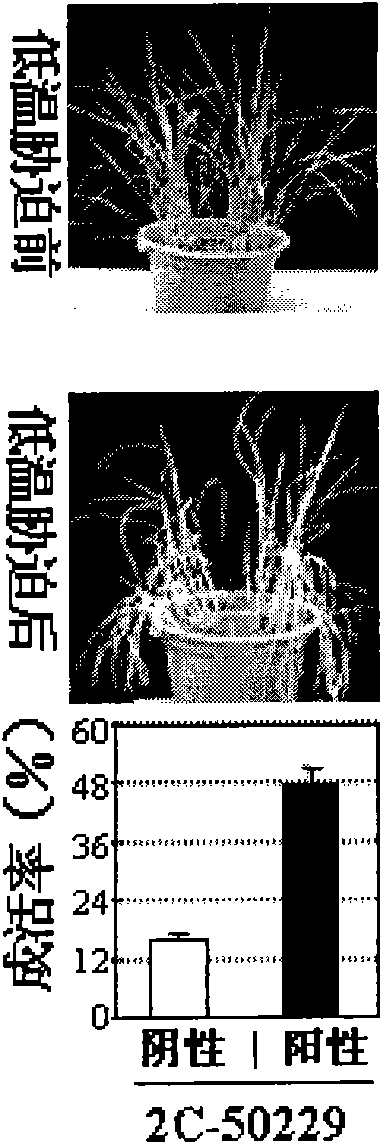Application of rice OsWRKY45-1 gene in improving abiotic stress resistance of plants
A gene and plant technology, applied in plant genetic improvement, angiosperm/flowering plants, applications, etc., can solve problems such as limited good genetic resources
- Summary
- Abstract
- Description
- Claims
- Application Information
AI Technical Summary
Problems solved by technology
Method used
Image
Examples
Embodiment 1
[0015] Example 1: Analysis of the expression pattern of OsWRKY45-1 gene under various stress responses
[0016] We selected the japonica rice variety IRAT109 (Oryza sativa L.subsp.japonica cv.) as the material for expression profile analysis. After the seeds are germinated, they are cultured to the four-leaf stage under normal growth conditions and treated with various adversities and hormones. In the drought treatment, the plants grown in sandy soil were deprived of water, and samples were taken before stress, 3 days, 4 days, and 6 days after stress. For high-salt stress, the seedlings were transferred from the hydroponic solution to the hydroponic solution containing 200mmol / L NaCl, and samples were taken before the stress, 3 hours, 6 hours, 12 hours and 24 hours after the stress. For low temperature stress, the rice seedlings were placed in an artificial climate chamber at 4°C, and samples were taken before the stress, 3 hours, 6 hours, 12 hours and 24 hours after the stre...
Embodiment 2
[0017] Example 2: Transgenic plants have enhanced tolerance to drought
[0018] In this example, a drought stress experiment was carried out on the line (2C-50229) that inhibits the expression of the OsWRKY45-1 gene and the corresponding negative line. After the above materials are germinated, they are broadcast live into small drums. The soil used in the test is a mixture of southern paddy soil and coarse sand at a volume ratio of 1:1. An equal amount of uniform sand and an equal volume of water are added to each drum, and the water will seep by itself to ensure The compactness of the soil was the same, and the experiment was repeated 3 times. When the plant grows to the 4-leaf stage, carry out water-cutting and drought stress for 3 to 5 days, then rewater, and investigate the survival rate of the plant after 3 to 7 days and take pictures. The results showed that, compared with the negative control, the line suppressing the expression of OsWRKY45-1 gene enhanced the toleranc...
Embodiment 3
[0019] Example 3: Transgenic plants have enhanced tolerance to low temperature
[0020] In this example, a low temperature stress experiment was carried out on the strain (2C-50229) that inhibits the expression of the OsWRKY45-1 gene and the corresponding negative strain. After the above materials were germinated, they were broadcast directly into small drums. The soil used in the test was common southern paddy soil, and the test was repeated 3 times. When the plants grow to the 4-leaf stage, carry out low temperature (4°C) stress for 4 to 6 days, then move the plants to normal room temperature conditions, and investigate the survival rate of the plants after recovering for 3 to 7 days and take pictures. The results showed that, compared with the negative control, the strains suppressing the expression of OsWRKY45-1 gene enhanced the tolerance to low temperature ( image 3). After recovering 7 days, the survival rate of the lines suppressing OsWRKY45-1 gene expression was 48...
PUM
 Login to View More
Login to View More Abstract
Description
Claims
Application Information
 Login to View More
Login to View More - R&D
- Intellectual Property
- Life Sciences
- Materials
- Tech Scout
- Unparalleled Data Quality
- Higher Quality Content
- 60% Fewer Hallucinations
Browse by: Latest US Patents, China's latest patents, Technical Efficacy Thesaurus, Application Domain, Technology Topic, Popular Technical Reports.
© 2025 PatSnap. All rights reserved.Legal|Privacy policy|Modern Slavery Act Transparency Statement|Sitemap|About US| Contact US: help@patsnap.com



